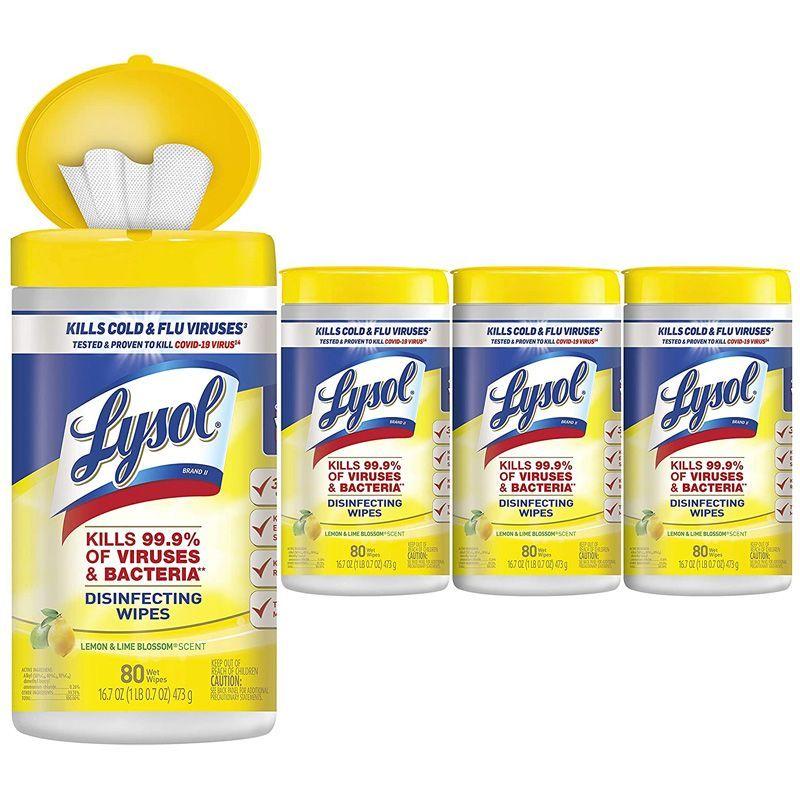7 Best Disinfectant Wipes for Killing Household Germs
Disinfectant wipes—those convenient and disposable cleaning sheets used to kill surface germs—have had a wild two years. They’ve been around in their current form for more than 20 years, but in the early days of the pandemic, wipes were in such high demand they reached nigh toilet-paper scarcity in stores. The belief was that these magical sheets reduce the transmission of the virus that causes Covid-19 from doorknobs, food delivery packages, and other hard surfaces. But by April of 2021, the CDC had clarified that though it’s “possible for people to be infected through contact with contaminated surfaces or objects (fomites), the risk is generally considered to be low.”
As a result of this statement and emerging research, disinfectant wipes are now considered a far less vital weapon in the battle against Covid spread, though they still have meaningful uses in the home as cleaning agents. Of course, it’s important to know what you’re buying. Few home cleaning situations demand the anti-everything nuclear option you’d use in a high-risk environment like a pharmacy or hospital. Most people will be well-served by gentler disinfectants with equally high rates of killing germs. We tried to take some of the guesswork out of shopping with a list of top disinfectant wipes based on personal experience, customer reviews, environmental rankings, and EPA classification lists.

Related Stories: N95 vs. KN95 Masks: What’s the Difference? • Best Air Purifiers • Can America’s Fastest Supercomputer Defeat Covid for Good?
First, let’s dive into what a “disinfectant” is—and what it does when applied to hard, nonporous surfaces. The National Institute of Health defines a disinfectant as “any substance or process that is used primarily on nonliving objects to kill germs, such as viruses, bacteria, and other microorganisms that can cause infection and disease.” In short, disinfectants kill bacteria, fungi, and viruses on surfaces—so they’re also often described as antimicrobial, antibacterial, and antiviral.
The EPA maintains a database—the N List—of disinfectants that have “demonstrated the ability to “kill all strains and variants of the coronavirus SARS-CoV-2 (COVID-19) when used according to the label directions.” The list includes mostly industrial wipes, as well as some consumer options, which we’ve included here. But a mention on the N List doesn’t mean said wipe is good for the user—or environment. Many wipes use plant-based and chemical compounds like citric acid, thymol, and ethanol to give them their 99 percent effectiveness against bacteria, viruses, mold, and fungi. But others, like the Clorox and Lysol wipes listed below, have quaternary ammonium compounds, or “quats,” as an active ingredient (Dimethyl Benzyl Ammonium Chloride, specifically), which most researchers recommend people avoid when possible. That’s because quats carry significant environmental dangers—like the potential to lead to antibiotic resistance—as well as health concerns for users, like links to allergy, asthma, and fertility problems, as well as hormonal disruption.
Most users are better served by more eco-friendly alternatives—many of which meet the same high EPA disinfectant standard as Dimethyl Benzyl Ammonium Chloride-based formulas. We’ve included both options below, and where possible, called out wipes that are not only highly effective but have also been graded well by the Environmental Working Group’s Guide to Healthy Cleaning and met the EPA’s Safer Choice Standard.
Like seemingly every other human being on the planet, I became more aware of my cleaning practices—and more interested in buying and stockpiling disinfectants—at the start of the pandemic. However, I’ve kept up with the CDC’s emerging research on surface spread and found a middle ground between the “kill all germs with fire”-style of panic and my usual goal of keeping a clean environment without chemical-bombing my preschooler and pets. To inform my reporting here, I first reached out to chemistry professor and researcher William M. Wuest at Emory University, in Atlanta, who specializes in disinfectants, for information and advice. Then I conducted a deep dive into the available research from the National Institute of Health (NIH), Center for Disease Control (CDC), Environmental Protection Agency (EPA), and others on both the effectiveness and potential side effects of household disinfectants. I selected these wipes based on my own experience using them, online reviews, and grades from the EPA and EWG. Whether you’re looking for a quick eco-friendlier way to banish household germs or a harsher disinfectant for high-risk settings, there’s an effective wipe for you.








